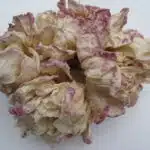Roses are one of the most popular and beloved flowers in the world. They are often given as gifts for special occasions or used to enhance the beauty of gardens, parks, and other public spaces. However, keeping roses alive and looking their best can be a challenging task for even experienced gardeners. In this article, we will explore the various techniques and strategies that can be used to ensure that your roses remain healthy, vibrant, and beautiful for as long as possible.
As horticulturalists know, many factors can impact the growth and overall health of roses. These include temperature fluctuations, soil quality, pests and diseases, pruning practices, and more. To keep roses thriving throughout the year requires a combination of careful planning, diligent maintenance, and a thorough understanding of the unique needs of each rose variety. Whether you are a seasoned gardener or new to cultivating roses, this guide will provide you with valuable insights into how to care for these lovely flowers so that they can continue to bring joy and beauty into your life for years to come.
Understanding The Different Types Of Roses
Roses are a timeless symbol of love, beauty, and elegance. They are one of the most popular flowers in the world and come in a wide range of colors, sizes, and shapes. Understanding the different types of roses is essential for anyone who wants to keep these beautiful flowers alive and looking their best.
Rose classification is based on identifying characteristics such as growth habit, bloom shape, color, fragrance, disease resistance, and hardiness. There are three main types of roses: species roses, old garden roses, and modern hybrid roses. Species roses are wild roses that grow naturally in various regions worldwide. Old garden roses date back to before the 19th century and include many unique varieties with distinctive scents and bloom shapes. Modern hybrid roses were first developed in the mid-20th century to produce larger blooms with more vibrant colors.
Identifying unique varieties within each type of rose classification can be challenging because there are thousands of different kinds available today. Some popular examples include tea roses, floribunda roses, grandiflora roses, miniature roses, climbing roses, shrub roses, and groundcover roses. Each type has its own specific needs when it comes to care and maintenance. Knowing what kind of rose you have will help you provide it with the correct environment for optimal growth and beauty.
As we move forward into understanding how to keep your rose bushes alive and thriving for years to come it is important to first understand the different types available today so you can choose which ones will work best for your particular landscape needs. One must take into account their desired maintenance level when choosing between an old garden or modern hybrid variety as well as whether they wish to add a pop of color via a mini or ground cover variety or perhaps create height through a climbing option. Overall understanding what type you have will ensure that proper care techniques are applied resulting in long term success for your rose gardening endeavors.
Choosing The Right Location For Your Roses
Roses are one of the most popular flowers in the world, and they require careful consideration when it comes to choosing a location for planting. The first factor to consider is sun exposure. Roses need at least six hours of direct sunlight per day to thrive. This means that you should choose a location that receives full sun, preferably in the morning or late afternoon when the sun isn’t as intense.
The second factor to consider is soil quality. Roses prefer well-draining soil with a pH level between 6.0 and 7.0. If your soil is heavy clay or sandy, you will need to amend it with organic matter such as compost or peat moss to improve its quality. The key is to create a soil structure that allows air and water to move freely through it while retaining enough moisture for the roses’ roots.
Climate considerations and drainage needs are also important factors in choosing a location for your roses. Roses prefer moderate temperatures between 60-70°F, so if you live in an area with extreme heat or cold, you may need to take extra precautions such as shading or mulching around your plants. Additionally, roses need good drainage to prevent root rot and other fungal diseases. Avoid planting them in low-lying areas where water can pool after rainstorms.
Preparing the soil for planting is the next step in creating an ideal environment for your roses to grow and thrive. By carefully considering sun exposure, soil quality, climate considerations, and drainage needs when choosing a location for your roses, you will be setting yourself up for success in growing healthy and beautiful plants that will bring joy and beauty into your life all season long.
Preparing The Soil For Planting
Having selected the perfect location for your roses, the next crucial step is to prepare the soil adequately. Soil preparation is a critical aspect of growing healthy roses, and it involves several steps that must be executed correctly. Similar to how a chef carefully prepares ingredients before cooking a meal, horticulturists must also take their time to prepare soil adequately for planting.
To begin with, remove any weeds or debris from the planting area, as they can compete with your roses for nutrients and water. Next, loosen the soil using a garden fork to allow air circulation, which helps improve drainage and prevents root rot. Afterward, it’s essential to test your soil’s pH levels using a soil testing kit, as different rose species have varying nutrient requirements.
Here are four essential nutrient requirements that you should consider when preparing your soil: nitrogen (N), phosphorus (P), potassium (K), and calcium (Ca). Nitrogen is essential for vegetative growth while phosphorus promotes root development and flower production. Potassium aids in disease resistance and hardiness while calcium strengthens cell walls. By ensuring these nutrients are present in adequate amounts in your soil, you’ll provide an ideal foundation for your roses to thrive upon planting.
As you prepare to plant your roses properly, remember that soil preparation sets the stage for success or failure in rose growing. Therefore, it’s imperative to pay meticulous attention to detail when preparing your soil. With proper soil preparation techniques such as weed removal, loosening of the ground and testing pH levels accompanied by the right balance of nutrients such as nitrogen, phosphorus potassium and calcium; your roses should grow healthily and rewardingly blossom into beautiful flowers that will brighten up any garden or landscape area.
Planting Your Roses Properly
When it comes to planting roses properly, there are a few key considerations that can make all the difference in terms of their survival and overall growth. The first step is to choose the right variety for your climate and soil conditions. Roses come in many different varieties, each with its own unique set of needs and preferences, so take some time to research which ones will thrive in your particular area.
Once you have selected your roses, it’s important to pay close attention to planting depth and spacing. Most experts recommend digging a hole that is twice as wide as the root ball and just deep enough to cover the top of the roots when the plant is placed in the hole. This will ensure that the roots have plenty of room to spread out and establish themselves in the soil. Additionally, be sure to space your roses at least 2-3 feet apart to allow for adequate air circulation and sunlight exposure.
By taking these steps to properly plant your roses, you can give them a strong foundation for healthy growth over time. With careful attention paid to choosing the right variety, planting depth, and spacing, you can help ensure that your roses will thrive in their new home for years to come. In the next section, we’ll explore another critical aspect of rose care: how to water them effectively without causing damage or disease.
Watering Your Roses Effectively
As a horticulturalist, I believe that watering your roses is an art form. It requires precision and care to avoid under or over-watering which can lead to root rot or drought stress. The key to keeping your roses alive and thriving is understanding the optimal soil moisture for this particular plant.
Watering frequency varies depending on the climate and soil type. In hot climates, roses require more water due to evaporation, while in cooler climates they need less water as the soil retains moisture longer. Furthermore, sandy soils drain faster than clay soils, so roses planted in sandy soil will require more frequent watering. As a rule of thumb, water your roses deeply once a week rather than light and frequent watering which promotes shallow roots.
To determine if your roses need water, stick your finger about 2 inches into the soil around the plant. If it feels dry at this depth, it’s time to water. However, if it still feels moist, wait a few days before checking again. Overwatering can be detrimental as it deprives the roots of oxygen leading to root rot. To avoid this problem, ensure that there is proper drainage in place by planting in well-draining soil or adding drainage holes if growing in containers.
Optimal soil moisture is crucial for the health of your roses as it affects nutrient uptake and photosynthesis rates. By watering deeply once a week and ensuring proper drainage, you can maintain healthy soil moisture levels for your roses. In the subsequent section, we will discuss fertilizing techniques for optimal growth without compromising on their health and longevity.
Fertilizing Your Roses For Optimal Growth
After watering your roses effectively, the next step to keeping them alive and healthy is fertilizing them for optimal growth. Fertilizers provide essential nutrients that are necessary for the development of strong stems, healthy foliage, and abundant blooms. There are two main types of fertilizers: organic and synthetic. Organic fertilizers are derived from natural sources such as composted plant matter, animal manure, or bone meal.
Organic fertilizers have several benefits over synthetic ones. Firstly, they promote soil health by improving its structure and increasing microbial activity. Secondly, they release nutrients slowly over time, which reduces the risk of nutrient burn or leaching. However, there are also some drawbacks to using organic fertilizers. They may contain pathogens or weed seeds if not properly processed. Moreover, their nutrient content can vary widely depending on the source and quality of the material used.
One important factor to consider when fertilizing roses is soil pH. Roses prefer slightly acidic soils with a pH range of 6 to 6.5. If the soil pH is too high or too low, the plants may not be able to absorb some essential nutrients from the fertilizer. Therefore, it’s important to test your soil regularly and adjust its pH if necessary using amendments such as sulfur or lime.
- Use a balanced fertilizer with an NPK ratio of 10-10-10.
- Apply fertilizer in early spring before new growth appears.
- Water deeply after applying fertilizer to prevent burning.
- Avoid getting fertilizer on foliage or flowers.
- Consider using slow-release fertilizers for long-lasting results.
In conclusion, fertilizing your roses with organic or synthetic fertilizers is essential for promoting optimal growth and abundant blooms. Organic fertilizers have several benefits but also some drawbacks that should be considered before use. Soil pH plays a crucial role in rose fertilization and should be tested regularly to ensure proper nutrient uptake. Following these tips will help you keep your roses thriving and looking their best. In the next section, we’ll discuss how pruning your roses can promote healthy growth and increase their lifespan.
Pruning Your Roses To Promote Healthy Growth
As with any living thing, roses require proper maintenance in order to thrive. One of the most important aspects of this maintenance is pruning. Pruning your roses on a regular basis can promote healthy growth and help keep them looking their best. Think of it like giving your roses a haircut – by trimming away dead or damaged branches, you’re encouraging new growth and ensuring that your plants stay healthy.
There are many benefits to pruning your roses. Not only does it promote healthy growth, but it can also help control the size and shape of the plant. Additionally, removing dead or diseased branches can prevent the spread of disease to other parts of the plant or to neighboring plants. Pruning can seem daunting at first, especially for beginners, but with practice and patience it becomes much easier.
When it comes to pruning techniques for beginners, there are a few things to keep in mind. First, make sure you have the right tools for the job – sharp pruning shears are essential for clean cuts that won’t damage the plant. Second, take your time and be gentle – don’t rush through the process or cut too much at once. Finally, pay attention to the natural shape of the plant – try not to remove too many branches from one side or another, as this can create an unbalanced look.
Table: Basic Pruning Techniques
| Technique | Description |
|---|---|
| Deadheading | Removing spent blooms to encourage new growth |
| Thinning | Removing older wood to promote new growth |
| Heading back | Shortening tall stems to encourage branching |
| Rejuvenation | Drastic pruning to revitalize an old or neglected plant |
In summary, pruning is an important part of maintaining healthy and beautiful roses. By understanding the benefits of pruning and following some basic techniques, even beginners can successfully care for their plants. In our next section, we’ll discuss how to deal with common pests and diseases that may affect your roses.
Dealing With Common Pests And Diseases
Preventing infestations and treating fungal infections are crucial to maintaining the health of your roses. Pests like aphids, mites, and thrips can easily damage the leaves and flowers of your roses. To prevent infestations, ensure that you keep your garden clean by removing any debris or dead plant matter. Additionally, spraying a solution of water and neem oil on a regular basis can help repel pests.
Fungal infections like black spot, powdery mildew, and rust are common among roses. These infections can spread quickly and cause significant damage to the plant if left untreated. One way to treat fungal infections is by using a fungicide spray that contains copper or sulfur. Another method is to prune off any infected parts of the plant as soon as possible.
Prevention is always better than cure when it comes to pests and diseases in roses. Regularly inspecting your plants for signs of infestation or infection can help catch issues early on before they become major problems. Additionally, providing proper care like adequate watering and fertilization can strengthen the rose’s natural defenses against these issues.
Moving forward, protecting your roses from extreme temperatures is essential to their survival. With proper care and attention to detail, you can ensure that your roses thrive in any environment.
Protecting Your Roses From Extreme Temperatures
As a horticulturalist, it is important to understand that roses are susceptible to damage during the winter months. Therefore, it is necessary to protect these plants from extreme temperatures which can lead to freezing or thawing of plant tissues. This can cause irreparable harm and even death to your roses.
One way to protect your roses during winter is by adding extra layers of mulch around their base. This will insulate the roots and help maintain an even temperature around the plant. Another way to protect your roses is by wrapping them with burlap cloth or other breathable material. This will prevent sunscald damage caused by the reflection of sunlight off snow or ice.
Preventing sunscald damage is important because it can cause injury to the bark and wood tissue of your roses, making them more vulnerable to diseases and pests. It is also recommended that you prune your bushes in late fall or early spring as this will help remove dead or diseased branches that could be contributing factors in causing sunscald damage.
In summary, protecting your roses from extreme temperatures is crucial for their survival and overall health. By using mulch and wrapping with burlap cloth, you can prevent sunscald damage which can lead to long-term harm. In the following section, we will discuss how incorporating mulch into your rose garden can help retain moisture and provide additional benefits for your plants.
Mulching Your Roses To Retain Moisture
After protecting your roses from extreme temperatures, it’s important to consider mulching as a way to retain moisture and keep them looking their best. Benefits of mulching include reducing weed growth, regulating soil temperature, and retaining moisture in the soil. Mulching also adds organic matter to the soil as it decomposes.
When choosing the best mulching materials for your roses, consider using organic options such as shredded leaves, grass clippings, or bark chips. These materials break down slowly over time and add nutrients to the soil. Avoid using synthetic materials that can harm beneficial microorganisms in the soil.
Properly mulching your roses is crucial for their overall health and appearance. By following these guidelines and choosing the right materials for your garden, you can ensure that your roses thrive year after year.
To encourage blooming in your roses, deadheading is an important technique to use. Deadheading involves removing spent blooms from the plant before they have a chance to produce seeds. This encourages the plant to produce more blooms instead of focusing on seed production. With proper care and attention, your rose garden can be a beautiful addition to any landscape.
Deadheading To Encourage Blooming
Did you know that deadheading your roses can encourage new blooms to grow? In fact, research has shown that regularly deadheading roses can increase the number of flowers produced by up to 70%. Deadheading is the process of removing spent blooms from your rose bushes to promote more growth and improve overall plant health.
Benefits of deadheading include not only an increase in blooms, but also a longer blooming season. When you remove spent flowers, the plant redirects its energy towards producing new growth instead of seed production. This leads to fuller, healthier plants with more vibrant flowers. Additionally, by removing spent blooms, you can prevent disease and pest issues from spreading throughout your garden.
Techniques for deadheading roses vary depending on the type of rose and its specific growth pattern. However, a general rule of thumb is to cut just above the first set of five leaves beneath the spent flower. This ensures that you are removing enough stem to encourage new growth while leaving enough foliage for photosynthesis. It’s important to use sharp pruning shears and sanitize between cuts to prevent disease transmission.
Encouraging more blooms through regular deadheading is just one way to keep your roses looking their best. But why stop at just one bush? In the next section, we’ll explore how propagating your roses can lead to even more beautiful plants for your garden.
Propagating Your Roses For More Plants
Root cuttings are an effective method of propagating rose plants as they are relatively easy to do and have a high success rate. Grafting is a more complex process which involves taking a cutting of a desired rose variety and attaching it to a rootstock of another rose variety. Seed propagation is another method of propagating roses and involves collecting seeds from the desired variety and following the steps of germination and planting. Overall, all three methods of propagating roses can be successful, however, the type of method used should be determined by the end goal of the project.
Root Cuttings
Rose propagation through root cuttings is an excellent way to increase the number of plants in your garden. It’s a cost-effective method that allows you to create identical plants, maintaining the characteristics and qualities of the parent plant. Root cuttings are taken from the roots of the parent plant during its dormant stage, typically during winter or early spring.
Root cuttings should be taken from healthy parent plants with strong, disease-free roots. The cuttings should be 6-8 inches long and have a diameter of about a pencil. Remove all leaves except for one or two on the top end. Dip the bottom end in rooting hormone to stimulate root growth and then plant them in well-draining soil mix, ensuring that they’re kept moist but not waterlogged.
It’s important to note that rooting success depends on many factors such as temperature, humidity, and light conditions. Be patient as it may take several weeks for roots to form. Once rooted, you can transplant them into their permanent location in your garden or in pots. With proper care and attention, these new rose plants will delight you with their beauty for years to come!
Grafting
Rose propagation through root cuttings is a well-known method for increasing the number of plants in your garden. However, another effective technique that horticulturalists use is rose grafting. This method involves taking a scion from one rose plant and attaching it to the rootstock of another rose plant. Rose grafting techniques have been used for centuries and have many benefits over traditional propagation methods.
One benefit of using grafting techniques is that it can produce stronger and more disease-resistant plants. By taking a scion from a strong and healthy plant, you can ensure that the new plant will inherit those qualities. Additionally, by attaching it to the rootstock of a different rose variety, you can create unique combinations of traits that would not be possible with traditional propagation methods.
Another advantage of using grafting techniques is that you can control the growth habit of the new plant. By selecting a rootstock with specific characteristics such as dwarfism or increased vigor, you can influence how the new plant will grow. This allows for greater flexibility in planting arrangements and can help maximize space in your garden.
In conclusion, while propagating roses through root cuttings has its benefits, grafting offers additional advantages such as stronger disease-resistant plants and greater control over growth habit. As a horticulturalist, it’s important to explore these different techniques to determine which one works best for your needs and goals in creating beautiful gardens for others to enjoy.
Seed Propagation
Another effective method for increasing the number of plants in your garden is through seed propagation. This technique involves planting rose seeds and allowing them to grow into mature plants. While it may take longer than other propagation methods, such as root cuttings or grafting, it offers its own set of advantages.
One benefit of seed propagation is that it allows for genetic diversity in your garden. Unlike other propagation methods where you are essentially cloning the original plant, growing from seeds can produce unique variations with different colors and characteristics. Additionally, rose seeds can be collected from your own garden or purchased from reputable sources, making it a cost-effective way to expand your collection.
Rose care in winter can be challenging for some gardeners. Seed propagation offers an opportunity to start new plants indoors during the colder months when outdoor planting is not possible. By starting seeds early indoors, you can give them a head start on growth before transplanting outdoors when the weather warms up. Indoor rose growing also allows you to control the environment and provide optimal conditions for germination and growth.
In conclusion, seed propagation offers unique advantages such as genetic diversity and indoor growing options during winter months. As a horticulturalist, it’s important to explore different propagation techniques to determine which one works best for your needs and goals in creating beautiful gardens for others to enjoy.
Using Natural Remedies To Keep Your Roses Healthy
After successfully propagating your roses, the next step is to ensure that they remain healthy and vibrant. In order to achieve this, you need to take proper care of your roses and protect them from pests and diseases. Fortunately, there are a number of natural remedies that can help you keep your roses healthy without relying on harmful chemicals.
One of the most effective ways to prevent pest infestations in your rose garden is by using natural remedies. These may include insecticidal soaps, neem oil, or garlic spray. These DIY rose care products are easy to make and can be used to control common pests like aphids, spider mites, and thrips. However, it’s important to remember that not all pests are harmful to your roses. Some insects like ladybugs and lacewings are actually beneficial as they feed on other pests.
Another common problem that rose growers face is fungal diseases such as black spot, powdery mildew, and rust. To prevent these diseases from taking hold in your garden, it’s important to maintain good hygiene practices such as cleaning up dead leaves and debris around your plants. Additionally, you can use natural remedies like compost tea or baking soda spray to help prevent or treat these diseases.
By utilizing natural remedies for rose pests and diseases prevention with DIY rose care products made from household items like soap or garlic mixed with water can be an effective way of keeping roses healthy without relying on harsh chemicals. But despite our best efforts sometimes issues arise in the garden that require troubleshooting in order for our plants to thrive again. Let’s explore some common rose problems and how we can solve them together!
Troubleshooting Common Rose Problems
Effective disease prevention is essential for the successful cultivation of roses. A variety of cultural control measures, such as selecting disease-resistant varieties, proper pruning techniques, and avoiding overhead irrigation, can help to reduce the prevalence of diseases in roses. Adequate watering is also important for the health of roses, as drought stress can cause the plants to become more susceptible to diseases and pests. To ensure that roses are adequately hydrated, it is necessary to water them regularly and deeply, and to adjust the frequency of watering according to seasonal temperatures and soil type.
Disease Prevention
Preventing rose diseases is crucial in maintaining the health and beauty of your roses. One way to prevent diseases is through proper cultural practices, such as watering at the base of the plant rather than overhead, which can cause fungal growth. Additionally, pruning and removing dead or diseased wood can prevent the spread of pathogens.
Early detection of diseases in roses is also essential for effective disease prevention. Regularly inspecting your plants for symptoms such as yellowing leaves, black spots, or wilting can help you catch any issues before they become severe. If you suspect a disease, it’s essential to act quickly and treat the problem with appropriate fungicides or other remedies.
Overall, preventing rose diseases requires a combination of proper cultural practices and vigilant monitoring of your plants. By adopting these strategies and staying alert to any potential problems, you can keep your roses healthy and thriving for years to come.
Watering Requirements
As a horticulturalist, it is important to understand the watering requirements of roses to troubleshoot common rose problems. Watering frequency and proper drainage are two key factors that can affect the health of your roses. Overwatering or watering at the wrong time can lead to root rot or other fungal diseases, while poor drainage can cause waterlogged soil and suffocate roots.
To ensure proper watering, it is recommended to water deeply once or twice a week rather than shallowly every day. This allows water to penetrate deep into the soil and encourages deep root growth. It is also important to avoid overhead watering, as this can increase humidity levels and promote fungal growth on leaves and stems. Instead, water at the base of the plant using a soaker hose or drip irrigation system.
In addition to proper watering frequency, good drainage is essential for healthy roses. If your soil does not drain well, consider adding organic matter such as compost or sand to improve drainage. It’s also important to avoid planting in low-lying areas where water tends to collect. By following these guidelines for watering and drainage, you can troubleshoot common rose problems and keep your plants healthy for years to come.
Long-Term Care And Maintenance Tips
Caring for roses is a labor of love, and the long-term care you provide will directly affect their lifespan. One option is to keep roses in containers, which makes them easier to move around and control their environment. When planting in containers, be sure to use high-quality potting soil that drains well. Roses need plenty of water, but they also require good drainage to prevent root rot.
During the winter months, it is important to take extra precautions to ensure your roses survive the cold weather. One way to protect your plants is by mulching. Mulch helps insulate the soil and protects the roots from extreme temperatures. You can use organic materials such as pine straw or shredded leaves as mulch. Another way to protect your roses during winter is by wrapping them with burlap or frost cloth. This helps prevent damage from harsh winds and freezing temperatures.
In addition to these tips, proper pruning is essential for maintaining healthy and vigorous roses over time. Prune your plants in late winter or early spring before new growth begins. Remove any dead or diseased wood, as well as any branches that cross one another or grow inward towards the center of the plant. By following these simple steps, you can ensure that your roses continue to thrive for years to come.
Conclusion
As a horticulturalist, understanding the different types of roses and choosing the right location for planting is essential to ensure their longevity. Preparing the soil and planting them correctly will provide a solid foundation for your roses to flourish. Watering your roses effectively and using natural remedies can help maintain their health. In case of any problems, troubleshooting tips can be used to resolve them.
Long-term care and maintenance requires pruning, fertilizing, and protecting your roses from pests and diseases. Roses have been used as symbols of beauty, love, and passion throughout history, making them an alluring addition to any garden. As William Shakespeare once said, “Of all flowers methinks a rose is best.” With proper care and attention, your roses will continue to bloom beautifully for years to come.
Image Credits
- “Roses” by Patrick Ahles (featured)





























